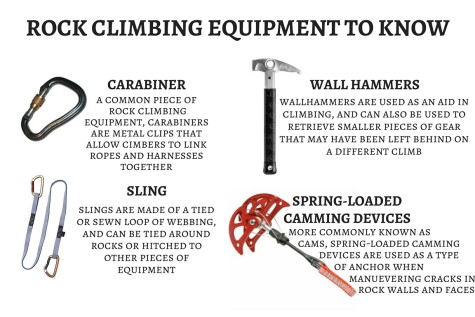Climbing Boulders and Getting Bolder
November 13, 2015
Arms and legs clutching the rock wall, sweat forming along his brow, senior Philip Matena and juniors Xavi Boluña and Thomas Greenhill all know the exhilarating physical and mental thrill of indoor and outdoor rock climbing.
“It’s one of the best feelings in the world,” Matena said. “That feeling of just being able to hang off the wall and have the air behind you I think is really indescribable.”
Boluña had the opportunity to get his first taste of the sport at a young age.
“It was in elementary school when I first started backpacking, so probably around the beginning of middle school is when I probably started rock climbing,” Boluña said. “The reason why my family and I wanted to learn rock climbing is because if you backpack, then if you casually come up against a mountain, then you can just kinda scale over it.’
Rock climbing is known for it’s variety. There is, of course, indoor climbing, which can be done at almost any specialized gym and county fair in America. The walls you can find in gyms usually range from 40-60 feet, double the height than that of a football goalpost. Top-roping is one of the more popular forms of rock climbing because there is a partner “belaying”, or holding onto the rope to prevent falls from being too serious. Lead or sports climbs focus more on the moves and techniques used to get to the destination rather than the destination itself. This differs from top-roping because the rope is already fixed into the wall or crag.
Despite the varying forms of the sport, rock climbing requires both mental and physical prowess and preparation. With a rope, falls can still cause serious injury, even on more basic climbs.
“The worst fall I think I can remember is in Dallas, and I was just doing a complicated move on a boulder problem,” Greenhill said. “I just wasn’t expecting to fall, so when I did it really knocked the wind out of me.”
Preparedness is key in rock climbing as evidenced by Matena’s workout routine consisting of pull ups, to help build arm and back strength, biking to help with cardio strength, and hangboarding to improve finger strength. Anaerobic and cardiovascular workouts are popular among experienced climbers, as it challenges strength in the arms and legs. Crossfit, an intense cardio and strength program created for training army soldiers, is
also popular for conditioning, along with marathons because they push the body to extreme cond
itions. Along with these physical preparations, climbers also need the appropriate gear for whatever climb they’re doing.
“For smaller stuff like bouldering, all you need is general climbing shoes and a chalk bag, and maybe a crash pad,” Boluña said.
If you’re considering trying rock climbing for the first time, whether it be for health or for recreational fun with friends, Matena’s advice is simple: “Just try it and see if you like it. If you do, start small and prepare yourself, and always go with a friend until you know what you’re capable of. There’s gonna be plenty of time for climbing mountains; just make sure you can handle a boulder first.”







